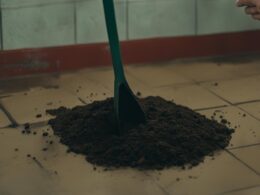Saffron refers to the plant scientifically known as Crocus sativus. It’s currently the most expensive spice on the market, which is, even more, another reason to learn how to grow saffron on your own. Its general behavior resembles that of any type of bulb. What’s complicated is the harvesting process, but we’ll deal with that later. Let’s see a step by step guide on how to grow saffron in your own backyard.
How to Grow Saffron on Your Own
1. Buy the Bulbs
Make sure that the bulbs you buy are the right variety. Choose a reputable seed house to make sure it’s a quality investment. Also, check if the bulbs are from the saffron crocus, not the autumn meadow crocus. The first is called Crocus sativus, while the latter is the Colchicum autumnale.
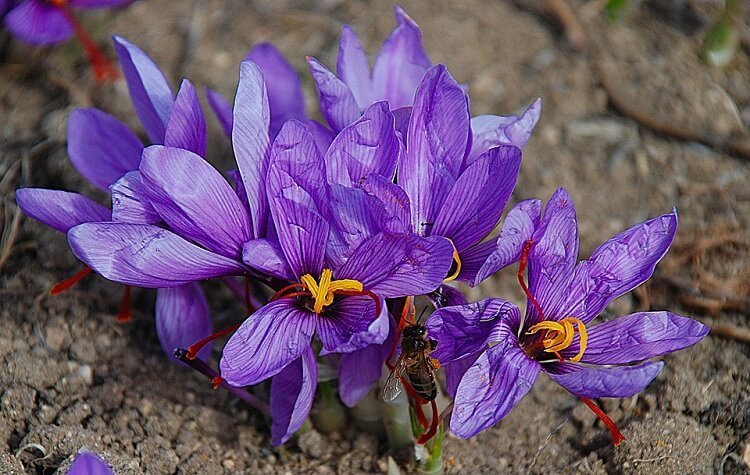
2. Choose the Right Amount
One mistake you can make when learning how to grow saffron is to take more or less corms than you actually need. The rule of thumb here is to make the following calculation: the number of people you have in the family x the number of dishes you want to make per year. Let’s say you have 4 members in the family and you cook saffron dishes every two months. As such, you will need 24 plants.
3. Choose the Right Container
Ideally, you should start by using a 6-inches deep container. If you notice that in time, this becomes too small for the plants or if you planted too many bulbs there, you can always repot them. If you plant them outdoors, the common planting depth is also between 6 and 8 inches.
4. Prepare the Soil
If you plant the saffron outdoors, it’s important to prepare the soil adequately and to use a soil tester before planting. The most important step is to cut off the weeds in the land. They can interfere with the reproduction process and even bring some deadly diseases for saffron. It is recommended to do it by hand. If, however, you choose to do it mechanically, be careful since you might damage the saffron bulbs.
If you plant saffron in a container, you should place some coarse sand or fine gravel in a 1-2-inches layer at the bottom of the planter. The rest of the container should be filled with rich potting soil. Make sure you offer them good drainage. They don’t love being placed in wet soil since crocus in general rot under these circumstances. Remember that the best time to plant saffron is in the fall.
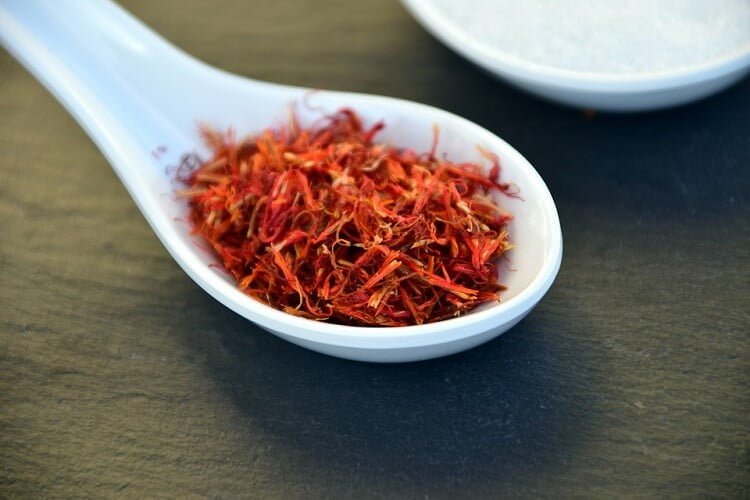
5. Plant the Saffron
Place 11 corms/ sq ft. Keep a space between them of 2.5”. Put them with the pointed side up. If you’re not sure which one is the pointed side, then plant them sideways since they will find their own way. Cover them with regular topsoil. Don’t forget to add some potting soil or compost above, to provide gradual nutrition. Each corm has to weigh a minimum of 5 grams.
6. The Right Temperature
Another important thing when learning how to grow saffron is setting the right temperature. If you plant it indoor, then the room it grows in should be a cold one. Set the temperature between 2 and 9 degrees Celsius (which is between 35 and 48 degrees F). Ideally, they should get 4-6 hours of sunlight each day. They actually like cold winters, paired with some hot and dry summers.
7. Watering Schedule
During spring (when the Crocus sativus reproduces) and fall (when they flower) you should water them rather often. Generally, you need to water them every 15 days. Besides these periods, they need low quantities of water. Water them abundantly immediately after you plant them. This step is very important since it takes the bulbs out of their dormant phase. The danger with over-watering is the fact that they are prone to developing fungi.

8. Trim the Foliage
You only need to trim the foliage when you’re sure the plant doesn’t flower anymore. Part of knowing how to grow saffron is when to do the right operations. You should know that new buds should appear in the soil 1 to 7 days after the plant first blooms. Occasionally, you may notice a second or even a third bloom, but this happens rather rarely.
Now you should stop watering the plant and move the containers into the cold room. Keep in mind that you don’t need to water the crocus when it’s dormant, which means starting with April and ending with September.
9. Replant It Every 4-5 Years
Another step of our guide on how to grow saffron is replanting it. The corms multiply each year and so you may end up having a lot more than you need. One solution for this is to offer as a gift to other saffron lovers. It’s a great gift since a saffron plant can live a maximum of 15 years. However, you should refresh them occasionally. Every 4-5 years, you should dig them up, divide and replant them. Pay attention, it will take an entire year until you will see the first flowers.
10. Fertilize the Plant
Before placing the saffron into the planting hole (whether in a container or outdoors), add fertilizer rich in potassium. Alternatively, you can also cover the soil found over the bulb with some wood ash. Generally, you shouldn’t use any nitrogen fertilizer. They force more greenery but don’t stimulate flower growth at all.
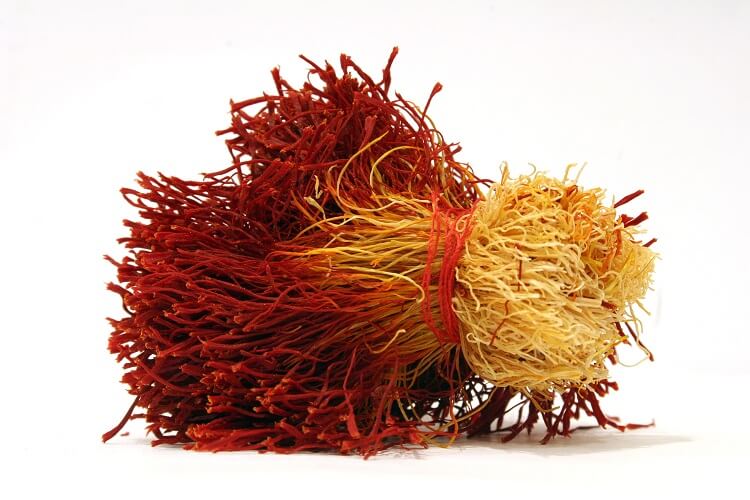
11. Harvest the Plant
First, you need to know that the flowering period can vary from one climate to another. For instance, in Spain saffron flowers starting with the middle of October, but in other areas, it can be earlier. The flowering period lasts for 10-15 days and you should harvest them in the first 5 days. Traditionally, the harvesting is done by hand.
The harvesting process in learning how to grow saffron is done by cutting the flower at the lower part of the corolla. Most of the times, people place the flowers in a basket to cut down the pressure and the potential damage to the plant. The harvesting cost has a great impact on the saffron price as well. If we’re talking about a huge harvest, a regular worker collects on average between 8 and 16 kg of flowers each day.
The problem with the automated harvesting is the fact that the machine also collects dirt, together with the flowers. Besides the cleaning issue, the dirt is also capable of harming the flower and the stigmas. This further translates to losses for your harvest.
Saffron Uses
Saffron has been used ever since the oldest times for various purposes. Read on to see how it was used and why it is so popular all over the world.
- Medicine
Going back to Hippocrates and Galen, we notice that saffron was often used as a medical treatment for a variety of illnesses. It was used for stomach ailments, heart trouble, flatulence, coughs, colds, uterine bleeding, insomnia or scarlet fever, for instance.
It’s good for your health because of its high content of minerals and nutrients. For instance, it offers 400% the daily recommended value for manganese. Next is vitamin C with 38%, magnesium with 18% and iron with 17%. There is also potassium and vitamin B6, each ensuring 14% of the daily recommended value.

- Dyeing
One grain of saffron is enough for coloring 10 gallons of water. The color you obtain is a unique yellow shade. This plant is used, for instance, to color the orange robes of the Buddhist priests in India, but indeed, they use more than a grain. The paradox here is that each saffron crocus has a lavender shade to it.
- Spice
Saffron is famous for its energizing properties and its earthy essence. More than 50 tons are gathered each year from China, Egypt, Azerbaijan, France, Israel, India, Greece, Mexico, Italy, Turkey, Spain, and Morocco. The entire commercial cost for this spice reaches around 50 million dollars. Under these circumstances, we should be grateful that we can preserve fresh saffron in an airtight container.
Why Is It So Expensive?
Just like we explained above, the high cost of this oriental delight is given by the complex harvesting process. Just like it happened thousands of years ago, people harvest it by hand. And it’s not an easy task either since many people are trying various positions so they can harvest more plants faster. You need 4,500 flowers just to make 1 ounce of saffron spice. Because of this, it’s a great idea to learn how to grow saffron on your own.
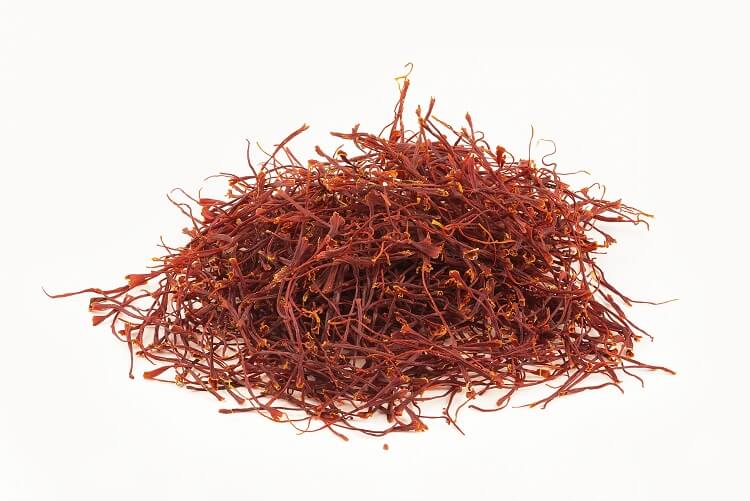
Conclusion
Saffron attracts people through its exoticism and price. However, what lies behind it is a complicated process, from planting it with special soil to watering it only when it needs and offering it the cold temperature it requires. Harvesting is not an easy job either since you need to do it by hand. It’s not complicated if you only plant it for yourself, but if you plan on having a big harvest, it might turn into a problem. Lastly, the final hard decision you will have to make is what to cook first with this delicious oriental spice.
Image source: 1








